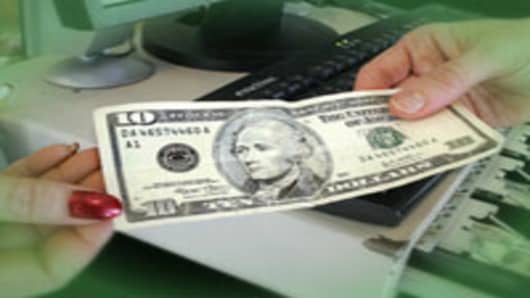Inflation took an unexpected turn for the worse, while retail sales slumped again in September, complicating the Federal Reserve's interest rate policy in the coming months.
The Producer Price Index, which measures inflation at the wholesale level, fell 0.4 in September, after a 0.9 percent decline in August. Wall Street economists were expecting a decline of 0.4 percent.
More importantly, though, on a core level, minus food and energy, the PPI came in at 0.4, higher than the 0.2 percent consensus forecast of economists. That means a 4.0 percent annual rate. The core rate rose 0.2 percent in August.
Retail sales were dreadful.
Sales fell 1.2 percent in September, much worse than the 0.7 percent consensus, while estimates for previous months were revised down. August's decline was put at 0.4%, vs. the original 0.3%. July's decline went from 0.5 percent to 0.6 percent.
Excluding autos, sales were down 0.6 percent in September, with economists expecting a decline 0.2 percent. August's original 0.7 percent decline was revised down to a 0.9 percent one. July's initial 0.3 gain was reduced to a 0.1 percent gain.
Second Thoughts About Inflation
The improving inflation picture in recent months—driven by a sharp decline in crude oil and other commodities—is among the reasons the Federal Reserve was able to cut interest rates last week for the first time since April. The Fed is widely expected to cut its federal funds rate —now at 1.50 percent—again at its policy meeting at the end of the month, but the latest data may give it pause.
The surprise in the core PPI is "not good news but it is not going stand in the way of any easings in policy," says economist Robert Brusca of FAO Economics.
At the same time, high energy prices have been depressing auto sales for much of the year, discouraging consumers from making new commitments.
Elsewhere on the economic front, the New York State Empire manufacturing index posted it slowest reading in history.
With the economic slowdown taking a turn for the worse in recent months, economists have been forecasting a quarterly decline in consumer spending for the first time in almost 20 years. Many economists now say the economy actually contracted in the third quarter. The first reading on quartely gross domestic product is out Oct. 30.
Spending may slow even more amid rising unemployment and declining consumer confidence, particular as the financial crisis seeps deeper into the broader economy. The outlook for the holiday shopping season is the worst in five years.
They'll be more on the inflation front Thursday, when the government reports consumer price data for September. The next snapshot of the consumer comes Oct. 28, when the Conference Board releases its monthly consumer confidence index.
"I think the consumer has actually finally hit the wall and we’re going to see it as we get near Christmas," says Art Cashin, director of floor operations at UBS Financial.


